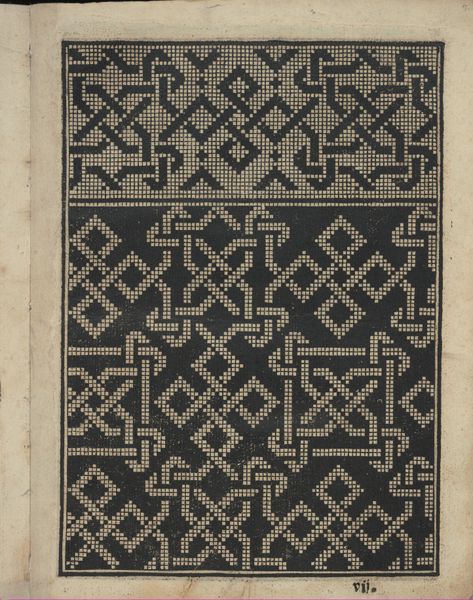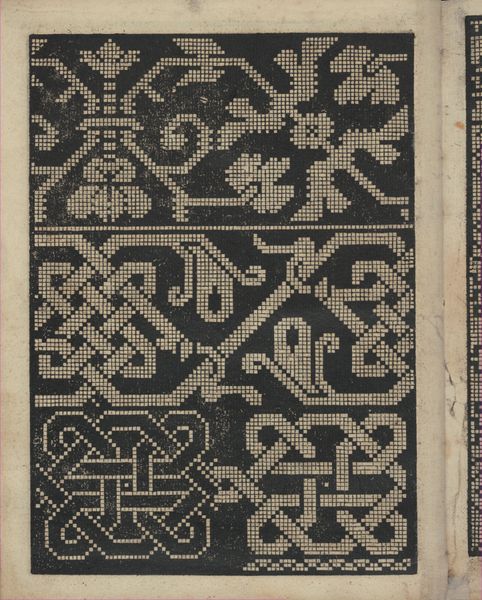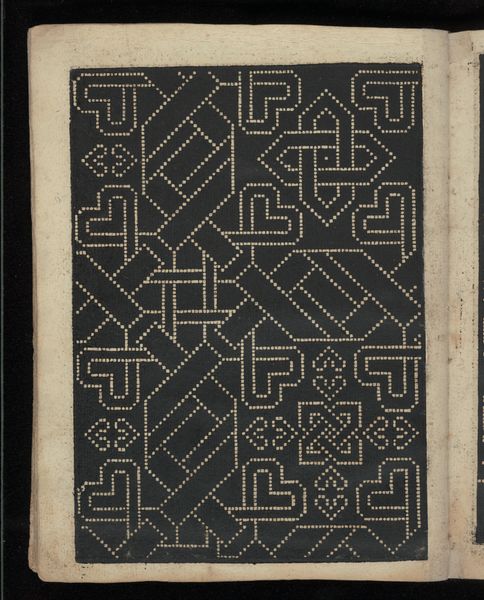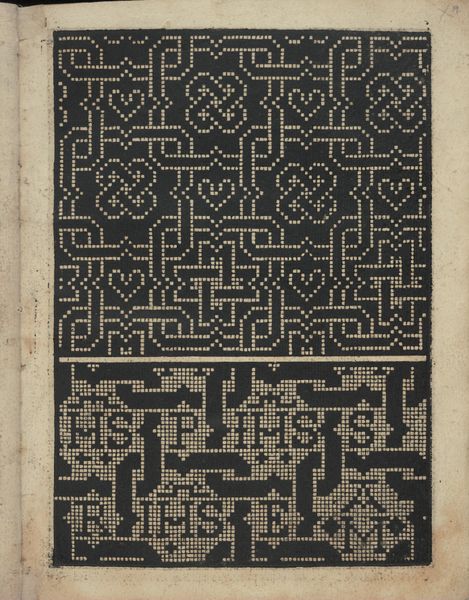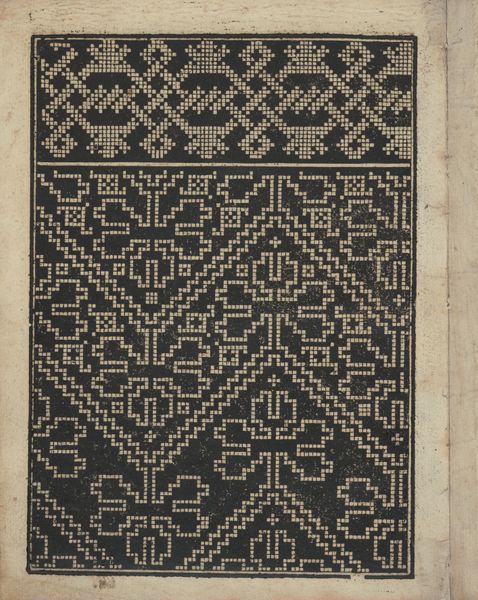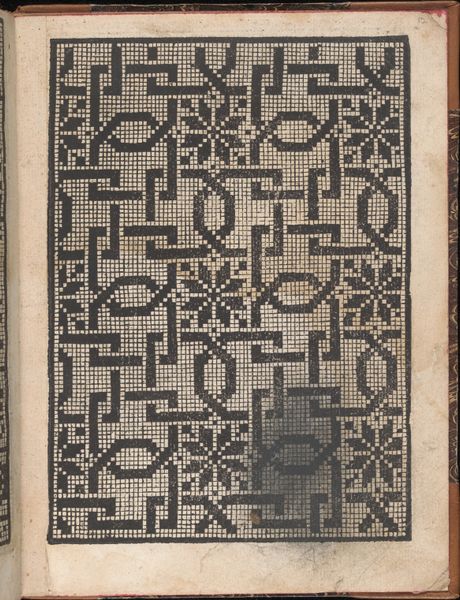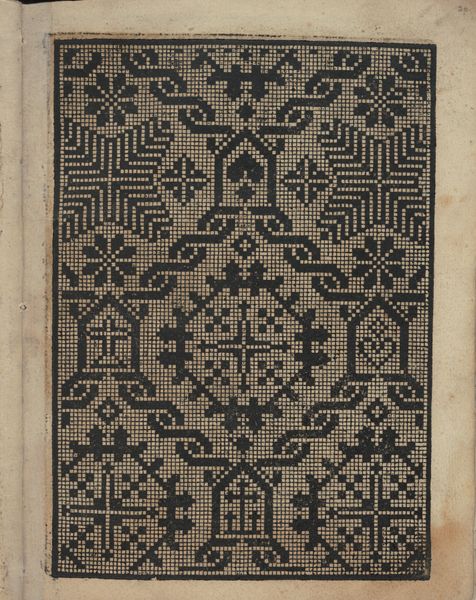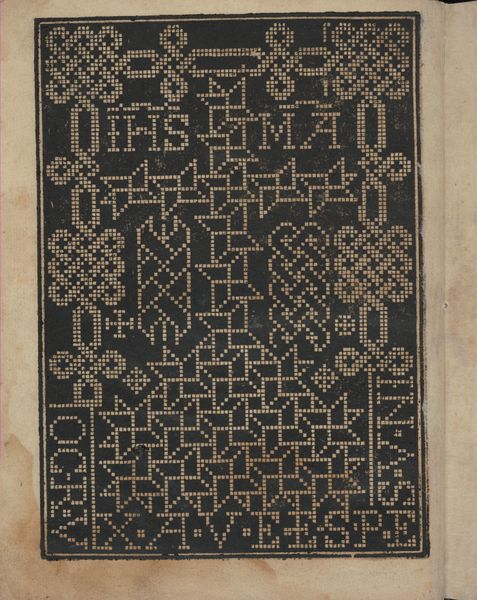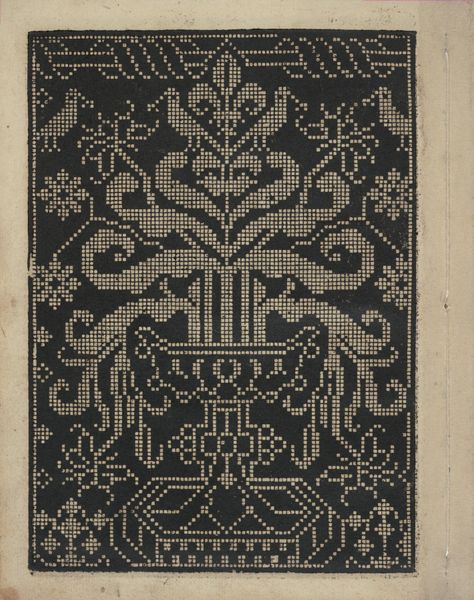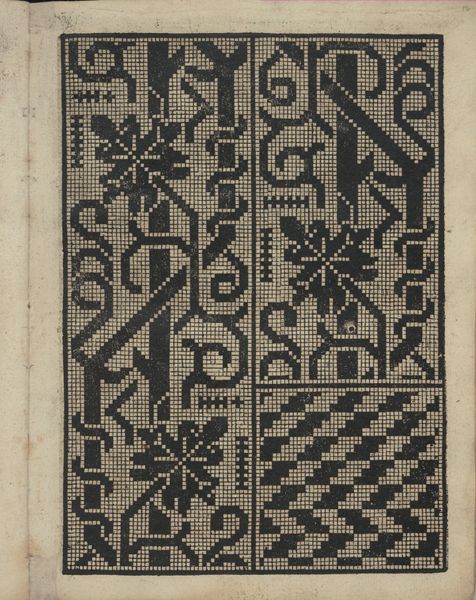
Libbretto nouellamete composto per maestro Domenico da Sera...lauorare di ogni sorte di punti, page 6 (recto) 1532
0:00
0:00
drawing, print, intaglio
#
drawing
# print
#
book
#
intaglio
#
pattern
#
11_renaissance
#
geometric
#
pattern repetition
#
decorative-art
#
italian-renaissance
Dimensions: Overall: 8 1/16 x 6 5/16 in. (20.5 x 16 cm)
Copyright: Public Domain
This is page six from a book made by Domenico da Sera in the 16th century, a pattern book for needlework. It’s printed on paper, using a woodcut technique. Look closely, and you can see how the blocky patterns are built up, like a low-resolution digital image. This reflects the inherent logic of embroidery: each stitch is a pixel. The designs are simple and repetitive, but potentially infinite in their variation, depending on the embroiderer’s skill and imagination. The black ink emphasizes the texture of the paper, and the crispness of the printed line. Pattern books like this were essential to the spread of needlework as a refined domestic craft, linking production and consumption. This allowed a standardization of design and technique, as well as a distribution of labor. The designs also reflect the social status of those who would have used them. The production of these books and the needlework they enabled was very much a part of the rise of a market economy and the slow but steady emergence of a middle class. Considering the act of making and the social context in which it occurs allows for a richer understanding of the artwork, blurring the distinction between craft and fine art.
Comments
No comments
Be the first to comment and join the conversation on the ultimate creative platform.

